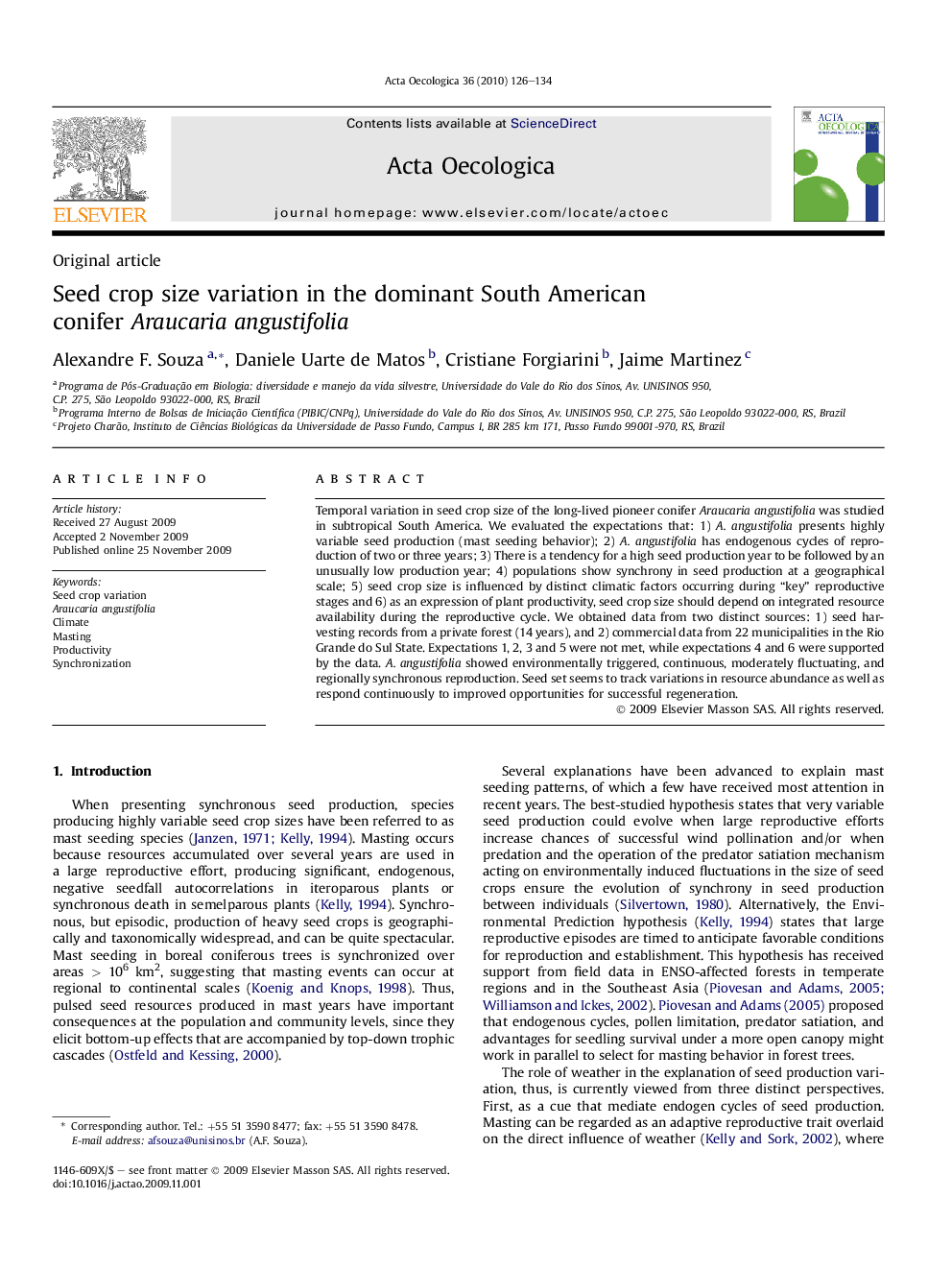| Article ID | Journal | Published Year | Pages | File Type |
|---|---|---|---|---|
| 4381468 | Acta Oecologica | 2010 | 9 Pages |
Temporal variation in seed crop size of the long-lived pioneer conifer Araucaria angustifolia was studied in subtropical South America. We evaluated the expectations that: 1) A. angustifolia presents highly variable seed production (mast seeding behavior); 2) A. angustifolia has endogenous cycles of reproduction of two or three years; 3) There is a tendency for a high seed production year to be followed by an unusually low production year; 4) populations show synchrony in seed production at a geographical scale; 5) seed crop size is influenced by distinct climatic factors occurring during “key” reproductive stages and 6) as an expression of plant productivity, seed crop size should depend on integrated resource availability during the reproductive cycle. We obtained data from two distinct sources: 1) seed harvesting records from a private forest (14 years), and 2) commercial data from 22 municipalities in the Rio Grande do Sul State. Expectations 1, 2, 3 and 5 were not met, while expectations 4 and 6 were supported by the data. A. angustifolia showed environmentally triggered, continuous, moderately fluctuating, and regionally synchronous reproduction. Seed set seems to track variations in resource abundance as well as respond continuously to improved opportunities for successful regeneration.
